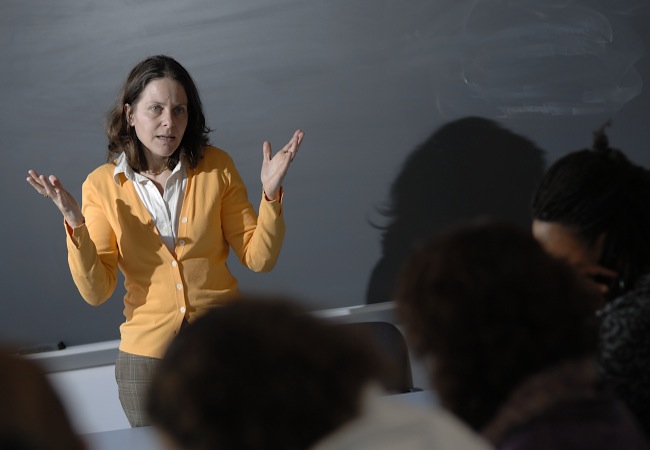Responding to anti-Muslim rhetoric
February 4, 2016
Sigal Ben-Porath and Penn GSE graduate Thea Renda Abu El-Haj on how to begin classroom conversations about Muslim life in America and around the world.
The wave of anti-Muslim rhetoric in American politics is reaching school communities. Educators should be ready to respond.
Sigal Ben-Porath, a Penn GSE professor of Education, Culture, and Society, and Thea Renda Abu El-Haj, a Penn GSE graduate now teaching at the Graduate School of Education at Rutgers University, believe schools have a responsibility to respond to hate speech which targets students based on characteristics such as their religion, race or sexuality. They offer ways to begin the conversation that is needed today in response to caustic anti-Muslim rhetoric.
Give students a full portrait
Too often, Muslims communities are either ignored in school curriculum or only discussed in the context of terrorism. Neither is productive for Muslim students or for helping all students understand the world around them. Instead, teach your students about the diversity of Muslim communities and Muslim-majority countries. Emphasize the broad spectrum of Muslim communities just within the United States: Families that have lived in country for generations, men and women who have converted, as well as immigrants and refugees from many countries.
Listen to your students
Muslim students might feel under attack, and as such they need your support and guidance. But they are more than just “at-risk students.” Respect them as individuals. Their experiences and knowledge can enrich the school community, as diverse student bodies often do. But be careful not to expect one student — or a fellow teacher — to represent Islam or the Muslim community. That’s not fair to either them or the community. Think about it: You wouldn’t ask a Christian student to represent the entire Christian faith or all its followers.
Don't draw lines
Be sure not to treat American Muslims as “good Muslims” while ignoring or demonizing Muslims in other countries. It’s important to reinforce that our democratic principles value respect for all peoples that make up our country. In doing so, don’t draw a false contrast with the “Muslim world” that is unfortunately portrayed as a shadowy place characterized by violence and oppression.
Educators understand it’s important to support their Muslim students. But that support (“He/She is one of us!”) can ring hollow if it doesn’t recognize that many American Muslims have a real connection to people living in countries that remain demonized in the public imagination.
Teach about Muslim communities even in the absence of Muslim students
Including lessons about Muslim communities is crucial, whether or not you believe there are Muslims in your school. Anti-Muslim rhetoric, like many other forms of hate, thrives on ignorance. By teaching your students about the diversity of the Muslim communities, you help them resist stereotypes and prejudice.



